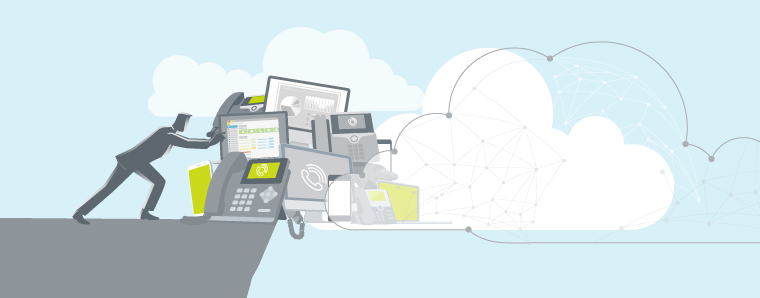Every migration project should begin by creating a detailed inventory and analysis of your current system. We recommend assessing four critical areas in order to make the transition smooth for your users.

Make it Easy
Existing users are accustomed to the user experience, architecture, features, and functionality of the current system. You should create minimal disruption for your users, while enhancing the user experience with new functionality of the new VoIP system. A focus on change management and user adoption is critical to your success.
Communicate Gaps
Take the time to note and understand your existing phone use cases and features to the new environment, documenting any gaps or major changes. It’s common to retire some features in favor of new. Actively communicate these changes to your users and internal stakeholders before implementing the VoIP system.
Determine Business and Network Impact
Inventory
The first thing you'll want to do is inventory your current system and network such as Endpoints or phones, IVR routing, call groups, lines and trunking, document cabling, identify POE switches, routers etc and diagram the network at a high level. This information will help you determine what will be required to support the new system.
IT strategic plans and growth/change
- Environment - Are there any M&As, added or reduction of locations, hiring etc.
- Functionality - You want to determine which users will use instant messaging, video conferencing and other unified messaging features as well as which users will only require a basic phone.
- Software Integration - Is there a need or a desire to integrate the new VoIP system with an existing CRM or Outlook Exchange database? If there is then gathering information for the vendor to tie those systems together will be your responsibilty.
Determine network requirements
You'll want to make sure the network is ready before moving forward with any phone system changes to ensure a smooth transition.
- Network - Any plans to increase bandwidth to accommodate voice and video at the branch offices. Any plans to migrate to new network technologies such as MPLS or SD WAN will need to be considered.
- A VoIP call only takes about 100k per call so it requires very little bandwidth (20 simultaneous calls only needs 2000k or 2mb) however you'll want to make sure you prioritize voice traffic in your network so that voice and video get any needed bandwidth first before any other traffic. You'll want to employ QOS (quality of service) in your network or on your network router.
- Security - Depending on your network configuration you'll want to ensure proper firewall and security for the new traffic hitting the network.
Physical Installation
Hosted VoIP phones come pre-configured based on the information you give to the provider. All of the research you did that we discussed in the article above is used to fill out provider forms that will ultimately be used to provision users phones. The vendor takes care of all the provisioning which simplifies your IT teams responsibility for programming prior to installation.
There are basically 2 ways to physically cut over to the new system...
- First you can place phones on desks at any time with working dial-tone and get any desktop software downloaded onto user's computers. The dial-tone for the new phones is provided by the vendor so phones can be in and working without disrupting the legacy environment. The only difference is that until the numbers are ported inbound calls will continue to hit the old system. So in this example you can have the old and the new phone on each users desk and when you feel ready you can schedule to port the numbers to the new system and unplug the old minimizing any down time.
- The second option is to schedule an after hours cut over and place phones at the end of a business day. The old phones would be removed and the new phones connected to the data port at each user workstation. Once all phones are place you call into the provider and initiate the porting. Within 10 minutes or so all your numbers should move to the new system and your up and running for your users the next day.
Depending on your users you might want to give them some burn in time before cutting over the numbers to insure they are trained and have a comfort level on how to perform basic functions on the new system before porting. Sometimes however the best way to guarantee adoption is to force users all at once to start using the new system by taking away the old system. In either case VoIP providers have good training videos on YouTube that can be easily viewed by your employees at any time.
The physical install of a VoIP system is a big advantage because all the headaches of installing a large server, getting phones to connect, programming etc is all gone. All of that work is done by the provider in their data center. All that is physically required on premise is your endpoints (phones or software), an IP connection on your network (Internet or private MPLS) and maybe a POE switch to power the phones over the network. All the bulky hardware your used to goes away and voice and video become just another packet running across your data network.
Download our free checklist to help you plan your VoIP system migration.


